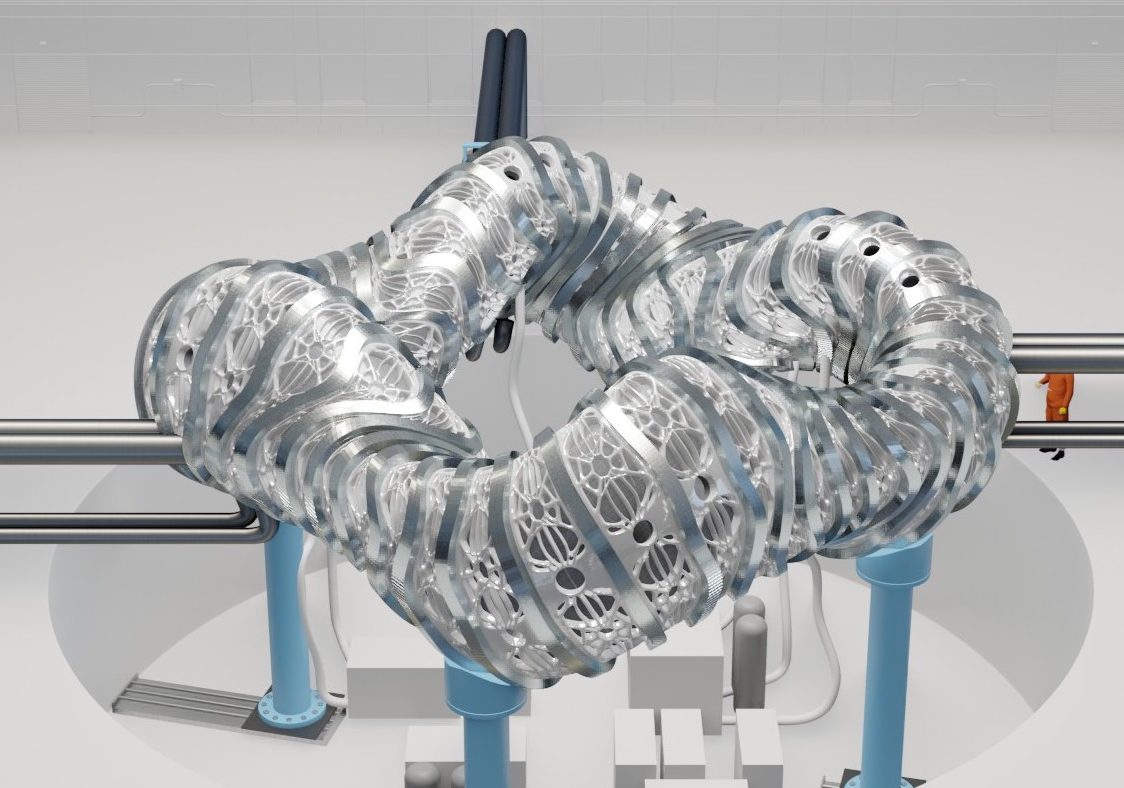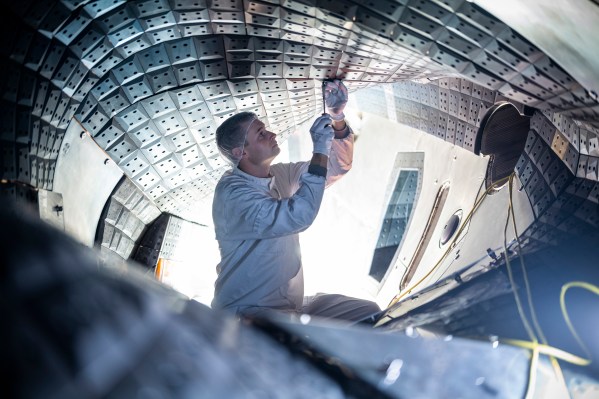One fusion startup is betting that a 70-year-old idea can help it leapfrog the competition, so much so that it’s planning to skip the experimental phase and hook its prototype reactor up to the grid.
The decades-old concept, known as a stellarator, is deceptively simple: design a fusion reactor around the quirks of plasma, the superheated particles that fuse and generate power, rather than force the plasma into an artificial box. Easier said than done, of course. Plasma can be fickle, and designing “box” around the fourth state of matter is fiendishly complex.
That’s probably why stellarators spent years in the fusion-equivalent of the desert while the simpler doughnut-shaped tokamak ate everyone’s lunch, and nearly all of their research funding.
But not all of it. Type One Energy is the brainchild of a handful of physicists steeped in the stellarator world. One built the HSX stellarator at the University of Wisconsin-Madison, two more performed experiments on it, and a fourth worked on the Wendelstein 7-X reactor, the world’s largest stellarator.
Together, they founded Type One in 2019 and nudged forward their approach to fusion at a steady pace. The company wasn’t in stealth — TechCrunch+ identified it as a promising fusion startup last year — but it was operating on a slim budget.
No longer. The company is announcing Tuesday an oversubscribed $29 million seed round co-led by Breakthrough Energy Ventures, TDK Ventures and Doral Energy Tech Ventures. Other participants include Darco, the Grantham Foundation, MILFAM, Orbia Ventures, Shorewind Capital, TRIREC and VAHOCA.
That’s obviously not enough to build a prototype plant, but it should get the company rolling on its new program, called FusionDirect. “It’s a direct shot on goal to a fusion pilot plant without the need to go build another large-scale science validation machine,” Chris Mowry, Type One’s recently installed CEO, told TechCrunch+.
“The science of stellarators is now scientifically mature. I would say Wendelstein 7-X, in particular, validated that,” Mowry said.
Type One will also draw on lessons learned from HSX, showing new ways to limit the loss of plasma, which is expensive to maintain inside a reactor. From there, though, the company is going to turn to partners to help with the rest.
For the magnets that will confine the plasma, the team has an existing relationship with MIT’s Dennis Whyte, whose groundbreaking work on high-temperature superconductors has helped catalyze the surge in interest in fusion over the last few years. Commonwealth Fusion Systems is also working with Type One. “They’ve been helping us on some things, and we may have them actually manufacture our magnets,” Mowry said. “It gets back to not wanting to reinvent the wheel. So if they can be part of our supply chain, why not do that?”

A mockup of Type One Energy’s stellarator. Image Credits: Type One Energy
Type One is also looking to other advanced manufacturing partners like Ingersoll Rand to make many components. The startup already works with the industrial giant, and Mowry sees a role for companies with sophisticated manufacturing operations to help make the complex parts needed to build a stellarator.
The key, of course, will be hitting price targets, and 3D printing might help there. “If you can 3D print a very complicated part, it’s a lot faster and easier and cheaper to do it than to try to do traditional subtractive manufacturing, where you’re machining away chips out of a big block of metal. You can reduce the part counts, and that reduces welding and stresses and all that kind of stuff.”
If all that sounds a little too good to be true, it might be helpful to know that Mowry is a realist at heart with a resume to support it. Before Type One, he did a brief stint at Breakthrough Energy Ventures and spent five years as the CEO of General Fusion, among other things. “Having spent my career in the energy space and the last 20 years in clean tech, I am painfully aware of how hard it’s going to be for the global energy industry to achieve net zero. This is not for the faint of heart.”
Mowry is right about that. He’ll undoubtedly need to draw on all that experience — and that of his colleagues’ — to hit their targets. Fortunately, with an eight-figure seed round and the confidence of a number of high-profile investors, they’re off to a good start.
